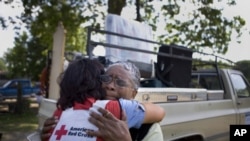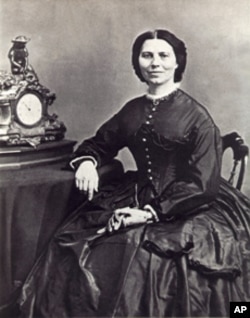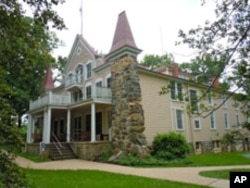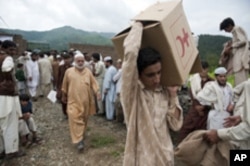The American Red Cross, the nation's premier emergency response organization, is celebrating 130 years of service. Its volunteers mobilize in times of disaster, war and crisis. And it all began with the vision of one woman.
Compassionate service
They’re on the scene during natural disasters, providing aid and comfort to victims of earthquakes, floods, hurricanes and other catastrophes. The American Red Cross has come to symbolize the ultimate in service.
Suzy DeFrancis, the organization’s chief public affairs officer, says their mission is to help people prevent, prepare for and respond to disasters.
“And we do it primarily through a large corps of volunteers all over the country who come together to help in times of need,” she says.
Angel of the Battlefield
It started with Clara Barton, a teacher and lecturer who, in the 1860s, tended to wounded soldiers during the American Civil War and provided medical supplies to ease their suffering. Her dedication earned her the nickname ‘Angel of the Battlefield.’
But Barton’s compassion didn’t end there. During a trip to Europe in 1869, she learned about the International Red Cross which had been founded in Switzerland a few years earlier.
That inspired her to create a Red Cross in the United States.
She lobbied the president and the U.S. Congress to establish the American Red Cross. On May 21, 1881, The American Association of the Red Cross was formed. On March 1, 1882, president Chester A. Arthur signed the Treaty of Geneva. Following unanimous ratification by the Senate, America joined the International Red Cross.
The organization’s first permanent headquarters was a Victorian-style house just outside of Washington, D.C.
Kim Robinson, curator of the Clara Barton National Historic Site, says Barton, the group's first president, worked and lived in the house with up to 30 volunteers at a time.
“They would have had supplies ready to go out in the event of a disaster,” says Robinson, “things like bandages, food, clothes and other materials.”
Between 1882 and Barton’s resignation in 1904, the American Red Cross responded to several major disasters, including the Johnstown, Pennsylvania flood of 1889 where more than 2,000 people lost their lives and thousands more were left homeless, the Spanish-American War of 1898, and the Galveston, Texas hurricane of 1900 that left over 6,000 dead.
Beyond disaster relief
The American Red Cross has evolved in the years since Barton’s death in 1912.
“We train over 10 million people a year in skills like CPR and first aid, and of course we have millions of wonderful blood donors who contribute their blood to save people’s lives,” says Suzy DeFrancis.
In fact, according to DeFrancis, the American Red Cross collects almost half of the nation’s blood supply. And it is now part of the largest humanitarian movement in the world.
“We are one of 186 Red Cross Red Crescent Societies in countries all over the world. There are Red Cross Societies in almost every country in the world.”
Social media
The evolution of new technology is helping those emergency responders fulfill their mission.
“Today we’re using text, we’re Tweeting, we’re on Facebook, so we’re continually evolving and using the new means. And the new generation coming along is continuing to give us energy and passion for our work,” says DeFrancis.
As the American Red Cross celebrates 130 years of service, museum curator Kim Robinson says Clara Barton would be pleased with what the organization has accomplished.
“Especially with the current disasters the U.S. has faced, her legacy of providing aid during peacetime for natural disasters has been one of the defining elements of this country,” she says.“I think she would have been very proud and glad that it continues to this day.”










